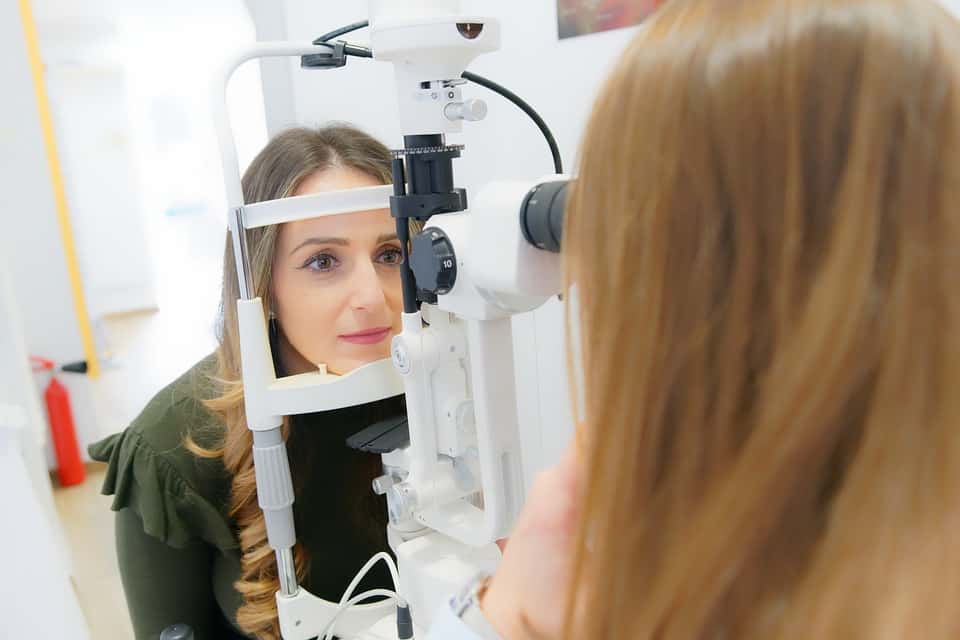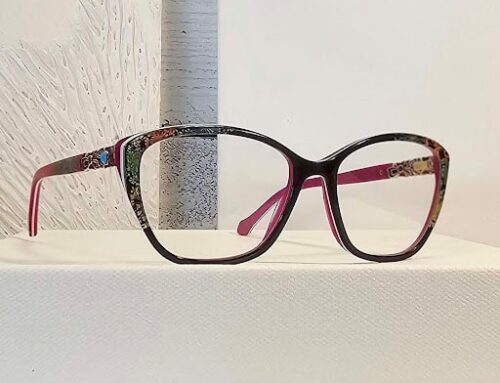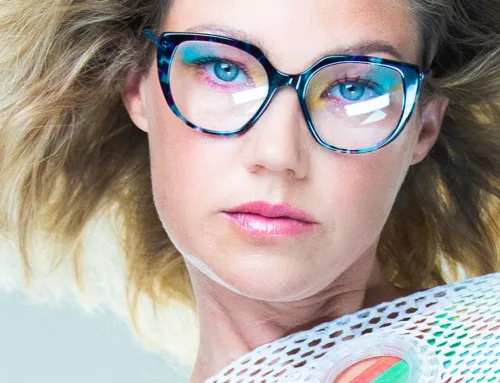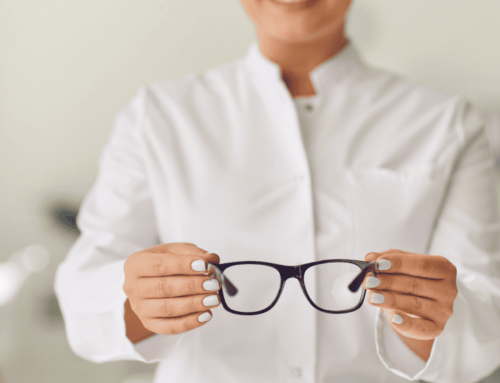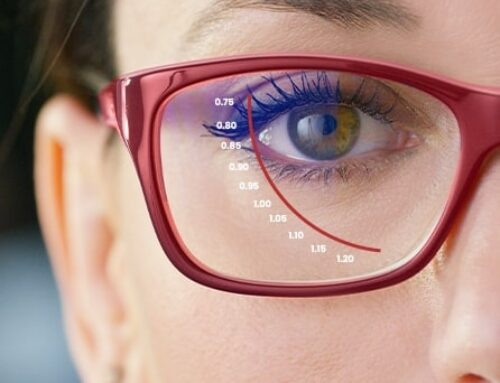The Role of An Optometrist
The primary role of an optometrist is to maintain your eye health for a comfortable life. Thus, it’s crucial to schedule routine eye exams with your optometrist . Regular eye exams help keep your vision healthy and catch eye disorders early. Many eye illnesses are long-term silent diseases.
An optometrist will perform the following tests during an eye exam:
- Visual acuity: the sharpness of your vision
- Alignment of the eyes when focusing on a single object
- Eye movement is how the muscles move your eyes
The optometrist will also examine your eyes for diseases like glaucoma and cataracts. Checks may also include indications of other health problems, including diabetes.
The optometrist may refer you to an optometrist or an ophthalmologist in some complex cases.
When to Have an Eye Exam?
How often you require an eye exam depends on several factors, including your health and age. The following are basic guidelines:
- Young children under three years old
A pediatrician will examine your child’s eyes to ensure they are developing well. The doctor will also check for eye conditions, such as cross-eyes or misaligned eyes.
- School-aged children and teenagers
Before your child starts kindergarten, have their vision and eye alignment evaluated. Your child’s doctor will then recommend the frequency of subsequent eye exams.
- Adults
The American Academy of Ophthalmology suggests receiving a complete eye exam at age 40. Some vision abnormalities and eye disorders are likely to start at this age. The optometrist will give recommendations based on the findings of your test.
When to See an Optometrist
Some eye symptoms need more urgent attention than others. But, it’s best to contact an optometrist as soon as you experience vision or eye difficulties.
You wouldn’t want to take any chances with your eyes’ health. Functioning while experiencing eye pain or discomfort is challenging, and it can often signify a more serious issue, such as an infection or a condition that impairs eyesight.
Center for Disease Control and Prevention data shows that more than 3.4 million adults in the United States who are 40 years of age or older have vision impairment or blindness. Make an appointment with your optometrist if you notice these signs or symptoms.
- Double Vision
Diplopia, or double vision, may indicate an injury, a tumor, or an infection. Double vision can affect both eyes or one (monocular). Astigmatism and dry eyes are conditions that may result in monocular double vision. Additionally, abnormalities in the lens, cornea, retina, or brain can cause double vision. It is, thus, crucial to schedule a consultation with your optometrist as soon as possible.
Binocular double vision is a condition brought on by improper eye coordination. People who have binocular double vision may see well with either eye. Yet, the eyes may point at different angles, conveying separate images to the brain, resulting in binocular double vision.
Your optometrist will be able to identify the reason for your double vision.
- Blurry Vision
Unexpected blurry vision or difficulty focusing could point to a severe health problem. Book an appointment with your eye doctor as soon as you experience this. Intermittent blurry vision or blurry vision affecting one eye also needs urgent attention.
Blurred vision may affect all of your vision or just certain areas of it. Treatment may be as simple as a new prescription, but immediate treatment to prevent long-term harm is necessary. Your optometrist will also examine you for other eye disorders responsible for blurry vision.
- Night vision trouble
One early sign of vision deterioration is trouble seeing at night when one can see well during the day.
Aging naturally results in more trouble seeing in low-light environments. But night blindness may also indicate more serious eye issues like macular degeneration.
An optometrist will diagnose the cause and suggest appropriate treatment.
- Frequent Headaches
If you frequently have headaches, a vision issue may be the root of the problem. Frequent headaches are one of the most typical signs that you need glasses.
You may overwork your eyes, probably from squinting to see clearly. Treatment of many eye disorders resulting in headaches requires wearing the appropriate lenses.
Headaches may also occasionally be a sign of glaucoma. When the pressure inside the eye builds up, glaucoma develops. Your optometrist can assess this and offer care recommendations.
- Eye pain
It’s natural to suffer mild eye discomfort occasionally, so don’t panic. However, you should see an optometrist should the pain become intense or persistent. Eye pain indicates an infection in your eye or a warning sign for a more severe eye health issue.
Eye pain is a medical emergency when accompanied by headaches and blurry vision. Acute angle-closure glaucoma and ocular tumors are a few painful eye conditions. These conditions can also quickly lead to blindness.
Aside from these, more typical causes of eye pain include;
- The irritation brought on by allergies or a foreign object in the eye
- Infections like dry eye syndrome, pink eye, or sunburn on the cornea.
Therefore, it’s worth going to an optometrist even if your eye only somewhat irritates you.
- Dry, itchy eyes
Dry eye syndrome is when your eyes feel dry, irritated, or feel like they are full of tiny rocks. This condition is common depending on your background and location. For instance, women are more likely than males to get dry eyes. Dry climates, contact lenses, and some medications are also possible causes of dry eyes.
You can use artificial tears for relief. However, schedule a visit with your eye doctor if your dry eye symptoms last more than a few days. Your optometrist will determine the cause of your dry eyes and prescribe treatment for the causes and the symptoms of your dry eyes.
- Sensitivity to light
As you move from indoor lighting to the sun outside, it’s common to feel somewhat light-sensitive (photophobic). Light sensitivity, however, is a typical sign of many eye problems and diseases and may also point to a more severe issue. The issue can be deeper inside the eye, or it might be with your cornea, the thin transparent film that covers your pupil and iris.
Some disorders that cause light sensitivity can leave scarring, which may be irreversible. Therefore, you need immediate treatment, whatever the cause of your sensitivity to light.
Light sensitivity can also result from illnesses unrelated to the eye, such as viral infections, allergies, or migraine headaches. It is, thus, vital that you see your optometrist as soon as possible.
- Watery Eyes
Eyes that won’t quit watering might also indicate dry eye syndrome. Your eyes may produce too many tears to compensate for not adequately keeping the eye lubricated.
For a healthy tear film, different biochemical characteristics work together harmoniously. If this is not the case, you may experience dry eyes or eye-watering. You will experience watery eyes if your tears don’t contain enough oil, and oil keeps your tears from evaporating.
Over-the-counter eye solutions can temporarily relieve watery eye symptoms. However, they don’t address the underlying cause. Consult your optometrist if the symptoms continue.
- Eye discomfort using digital screens
The issue of computer vision syndrome is getting worse by the day. Many of us sit in front of a computer screen for hours at work. When we get home, we continue using our laptops, televisions, and phones again.
Excessive screen time can cause:
- Eye strain in adults
- Lower blink rates result in symptoms of dry eyes. Humans typically blink 15 times per minute, but this number significantly drops when we stare at a screen. We need to blink to keep our eyes lubricated; thus, this is an issue
- Accelerated progression of myopia in children
Some people experience dry and tired eyes after a long day at the office. In this case, you should sit further from your screen and take frequent breaks from the screen. To relieve the symptoms, you may use lubricating eye drops. However, if symptoms continue, see your optometrist for review and treatment recommendations.
- Problem with distant and near objects
Changes in distant or near vision are usually indicative of a prescription change. If you experience blurred vision when looking at close-up objects, you may be suffering from presbyopia.
Presbyopia, commonly known as age-related long-sightedness, often affects anyone over 40. Presbyopia results from the natural hardening of the eye lens, which makes it more difficult for the lens to focus at various distances.
- Diagnosis of an ailment that affects the eyes.
Several chronic illnesses, including diabetes and lupus, can impact your eyes. The symptoms of each ailment vary. For instance, diabetes might cause blurry vision, and Lupus patients are more likely to experience light sensitivity or eye pain. Once diagnosed with such ailments, consult an optometrist to prevent vision issues.
Never ignore the signals that your eyes are sending you. Eye doctors can help resolve many eye problems with prompt diagnosis and care. Eyes can also show early signs of other health conditions like diabetes and high blood pressure. You can identify these problems early with the use of routine eye exams. In general, it is advisable to have a complete eye checkup once a year.
The eye doctors at spectacular eyewear help you achieve the ultimate vision and eye care. Book an appointment for the best contact lenses or eyeglasses. Whether cool, sassy, business chic, geeky, plain, or wow, spectacular eyewear has an eye care solution for you.

